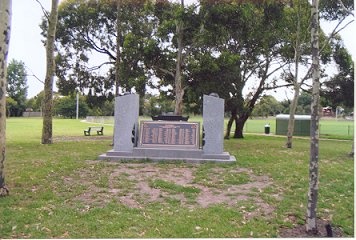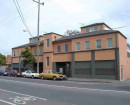City of Brighton Avenue of Honour Memorial
Nepean Highway BRIGHTON, BAYSIDE CITY
-
Add to tour
You must log in to do that.
-
Share
-
Shortlist place
You must log in to do that.
- Download report




Statement of Significance
This record has minimal details. Please look to the right-hand-side bar for any further details about this record.
-
-
City of Brighton Avenue of Honour Memorial - Physical Description 1
Avenue. 139 trees. Two memorials on Nepean Highway - one opposite McMillan Street, the other on the corner of the Highway and North Road mark the Avenue of Honour which no longer exists. WW1.
City of Brighton Avenue of Honour Memorial - Historical Australian Themes
Remembering the fallen
City of Brighton Avenue of Honour Memorial - Usage/Former Usage
Not extant
Veterans Description for Public
City of Brighton Avenue of Honour Memorial - Veterans Description for Public
The Brighton Avenue of Honour, originally consisted of 139 plants that were established to commemorate the First World War. The Avenue of Honour no longer exists but in its place stands a memorial listing the names of those who served, including 82 fallen men. The memorial replaced the monument on the corner of North Road. The current memorial stands in Hurlingham Park on the Nepean Highway (opposite McMillan Street).
In Australia, commemorative trees have been planted in public spaces since the late nineteenth century. Arbor Days were held regularly in most Victorian State Schools during the late 1800s and early 1900s, and numerous trees were planted in parks in Melbourne and throughout Victoria to mark the visits of important and famous people.
This tradition of commemorative planting was continued in 1901 when at the end of the Boer War trees were often planted for each soldier of the district who was killed in South Africa. These plantings, however, rarely consisted of more than two or three trees in each town.
During and after the First World War avenues of honour consisting of trees lining significant streets became a popular form of commemoration. They represented a new egalitarian approach to the commemoration of soldiers where rank was not a consideration: each tree symbolises a person.
Avenues of honour are a uniquely Australian phenomenon. Australians, and in particular Victorians, embraced the idea of planting them more enthusiastically than any other country in the world. The Eurack Avenue of Honour is the earliest known avenue of honour to be planted in Victoria and dates from May 1916.
By the time of the Second World War avenues of honour had declined in popularity as a means of commemoration. Today it is estimated that over 300 avenues of honour have been planted in Victoria to commemorate service personnel since 1901.
-
-
-
-
-
FORMER ST JOHN'S THE LESS ANGLICAN CHURCH AND SCHOOLROOM
 Victorian Heritage Register H1970
Victorian Heritage Register H1970 -
SIR THOMAS BENT STATUE
 Victorian Heritage Register H2023
Victorian Heritage Register H2023 -
THE PINES
 Victorian Heritage Register H2364
Victorian Heritage Register H2364
-
-









